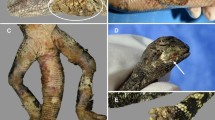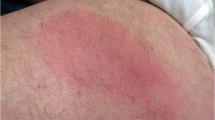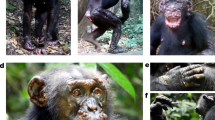Abstract
WE have shown that two culturally distinguishable groups of Ceratocystis ulmi are present in Britain, one “fluffy” and aggressive, the other “waxy” and non-aggressive, and have presented evidence that the former is responsible for the current epidemic of Dutch elm disease1. It is of obvious interest to consider the origin of the aggressive strain.
This is a preview of subscription content, access via your institution
Access options
Subscribe to this journal
Receive 51 print issues and online access
$199.00 per year
only $3.90 per issue
Buy this article
- Purchase on Springer Link
- Instant access to full article PDF
Prices may be subject to local taxes which are calculated during checkout
Similar content being viewed by others
References
Gibbs, J. N., and Brasier, C. M., Nature, 241, 381 (1973).
Little, E. L., Misc. Publs. US Dep. Agric., 1146 (1971).
Pomerleau, R., Bi-mon. Prog. Rep. Forest Ent. Path. Branch, 20, 1 (1964).
Finnegan, R. J., and Sippell, W. L., Bi-mon. Prog. Rep. Forest Ent. Path. Branch, 20, 3 (1964).
Gibbs, J. N., and Howell, R. S., Forest Rec., Lond., 82 (1972).
Peace, T. R., Bull. For. Comm., Lond., 33 (1960).
May, C., Circ. US Dep. Agric., 322 (1934).
Peace, T. R., Pathology of Trees and Shrubs, chap. 38 (Oxford University Press, 1962).
Author information
Authors and Affiliations
Rights and permissions
About this article
Cite this article
BRASIER, C., GIBBS, J. Origin of the Dutch Elm Disease Epidemic in Britain. Nature 242, 607–609 (1973). https://doi.org/10.1038/242607a0
Received:
Issue Date:
DOI: https://doi.org/10.1038/242607a0
Comments
By submitting a comment you agree to abide by our Terms and Community Guidelines. If you find something abusive or that does not comply with our terms or guidelines please flag it as inappropriate.



